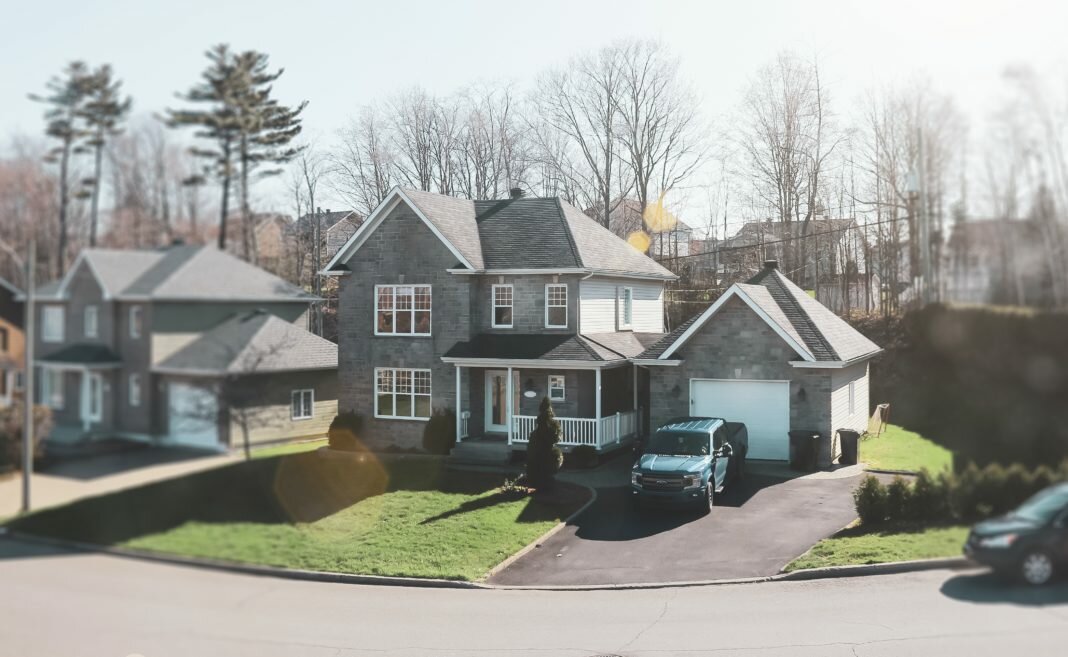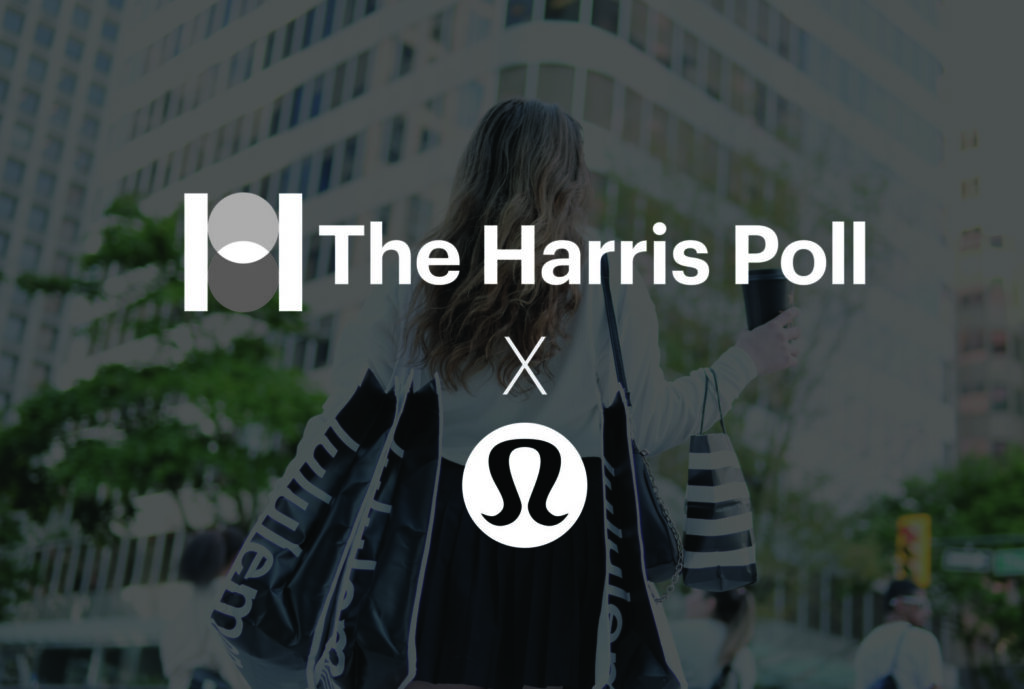Brief • 5 min Read

The COVID-19 pandemic has drastically affected everyday life, especially for those that live in highly populated areas. No longer content to stay cooped up inside, many urban dwellers have considered moving to new homes outside the city. The resulting concern about the future of American cities has become so commonplace during the pandemic that a viral LinkedIn post in August 2020 went as far as to declare “New York City is dead forever.”
However, research by The Harris Poll and the Chicago Council on Global Affairs in November 2020, surveying residents of America’s largest metropolitan areas about their perspectives on urban living and the state of their cities, shows that even though the pandemic has negatively impacted big city living, residents are still hopeful about the future of their city. Although many Americans have fled from densely populated areas during the pandemic, those living on the edges of major cities reveal that they still care about the future of those cities. Exurbanite opinions show that America’s post-pandemic recovery is still dependent on the well-being of large cities.
Understanding the Exurbs
Often perceived as an overflow of the suburbs, exurbs are defined as districts outside of a city that are less populated than the inner suburbs of a metropolitan area but still maintain an economic and commuting relationship to the nearby metro area. These areas are often near or are intertwined with outer-lying farmland or beaches. As a result, they are desirable for the lack of congestion and noise often found in large cities. More space, improved safety, and privacy are also compelling aspects of such areas.
Additionally, despite their less expensive standards of living, they often consist of prosperous families and individuals. Such prosperity means that many of the services and amenities that may be a struggle for a central city to provide to its urban residents likely exist at a high quality level in the exurbs.
Given the perks that exurban living can provide and the rise of telecommuting due to the pandemic, the exurbs have become a more desirable place to live during 2020.
Exurbia, Sweet Exurbia
Naturally, given their experience with the pandemic, most exurban residents feel no need to change their current environment. It seems exurban residents especially enjoy the space that comes with living where they do. In fact, 74% of those living in the exurbs view high population density as a disadvantage instead of an advantage, a share even higher than those living in inner suburbs and rural areas (65% for both).
When asked where they would be more likely to live as a result of the pandemic, three-quarters of residents (73%) answered they would not change where they live. Additionally, without the constraint of the pandemic, if exurban residents could choose to live anywhere, most would still prefer to live in a suburban area (65%).
However, a quarter of exurban residents (24%) desire to move to a city, perhaps indicating a group that are eager to return to urban life or embrace urban living for the first time in a post-pandemic world.
Exploring Exurban Concerns
With center cities as the economic lifeline for most exurban communities, it’s unsurprising that nearly half of these residents express concern about the local economy and cost of living. In fact, they express greater concern for economic issues than the average across all metropolitan areas surveyed. However, their concern for other common, city concerns like housing, inequality, and transportation is lower than the average.
Similar to those living in other parts of metropolitan areas, exurbanites’ top concerns about their cities include COVID-19 (58%), taxes and fees (45%), and the economy (44%). More minor concerns include public safety (24%), the environment and climate change (22%), and education (20%).
Addressing the COVID-19 pandemic
Across the exurbs of America’s largest metropolitan areas, most residents do not see their local leadership as being highly effective at addressing the pandemic. Just a third say their mayor (34%) and other county or regional officials (29%) have been very or extremely effective at addressing the pandemic.
This is consistent with their overall faith in local leadership to handle COVID-19. Only a third of all exurban residents (35%) also say they are very or extremely confident in their mayor’s ability to effectively respond to the COVID-19 pandemic.
However, of the government and agency options provided, they show the highest approval for state leadership with 43% saying their state governor has been very or extremely effective at addressing the pandemic. This is followed by the Centers for Disease Control and Prevention (CDC) at 40%.
This may explain why, when given the option between national, state, and city elected officials and the private sector, just 12% of all residents would prefer that city-elected officials take the lead on responding to COVID-19 as opposed to state- or nationally elected officials (74%).
Perspectives on standards of living
Often a common issue in large cities and currently further exacerbated by the pandemic, economic inequality is of comparatively less concern to those living in the exurbs. In fact, those living in city centers or downtown areas express nearly twice the rate of concern about economic inequality in their city compared to those in the exurbs (24% vs. 13%, respectively). This is likely a product of exurbanites’ distance from the frequent instances of economic inequality that characterize city centers.
This distance, alongside a more homogenous population in the exurbs, may also explain why exurban residents show slightly more approval for how local and state officials have handled economic inequality when compared to residents closer to the city center. Most exurban residents say their mayor (54%), other county or regional officials (53%), and state governor have been effective at addressing the issue.
Housing is another area where exurban residents show less concern than the metropolitan area average. Just over half of exurbanites (52%) consider the affordability of housing very or extremely important compared to 72% of those living downtown, 69% of suburbanites, and even 69% of those living in rural areas outside larger cities. Moreover, when asked which local issues were of primary concern to them, only 15% of exurban residents mentioned housing compared to 21% of all metropolitan residents surveyed for this study.
Part of this may be due to the lower housing costs that exurban residents experience compared to those living closer to the city center. Another reason may be that 60% of residents already feel that their city has enough or too many affordable housing options. However, this view may be influenced by the fact that exurban residents tend to have high incomes in areas with low housing prices, which makes it easier for them to afford a place to live.
This perspective on housing inventory may ultimately explain why most exurban residents feel their mayor (54%) and other county and regional officials (53%) — and even their state governor (55%) — have been effective at addressing affordable housing. Approval of state and local leadership likely also explains why most exurban residents would prefer elected officials from either of these groups take the lead on affordable housing (59%).
Still, a notable plurality of those in the exurbs support the creation of additional affordable housing in their city (32%). Of these supporters, another 84% support the creation of additional affordable housing options in their own neighborhoods.
Moreover, less than a third of all exurban residents (29%) are very or extremely confident in their mayor’s ability to keep housing affordable. Given the pandemic has exacerbated stark economic inequality across American cities, investments in affordable housing will go a long way toward improving equity concerns in the area, boosting faith in local leadership’s ability to handle this issue, and maintaining the approval of exurban residents.
Public safety and race relations
Large metropolitan areas have seen their share of discrimination issues related to policing. This has made protests regarding police maltreatment and social justice commonplace for such areas, especially during the summer of 2020 after the death of George Floyd. In fact, across the metropolitan areas surveyed, a quarter of residents (24%) say racial equity is a primary concern for them. Often more removed from issues regarding race and public safety relations, and given more racially homogenous populations, fewer exurban residents note public safety and racial equity as primary concerns compared to all metropolitan residents (24% vs. 30% and 24% vs. 19%, respectively).
Alongside protests has come a concern about local social unrest. However, given their distance from city centers where most protests occur, most exurban residents are not concerned about this. Sixty-two percent say they are not concerned about social unrest in their city — more than twice the share of downtown residents who say the same (30%).
In fact, most exurban residents also support the Black Lives Matter movement (55%), though this is much lower than those who live in inner suburbs (66%) and downtown (72%). Additionally, although a third of exurbanites are very or extremely confident in their mayor’s ability to respond to protests about racism and policing (35%), twice that number say that, so far, their mayor (70%) has been effective at addressing protests over racism and policing. Most also feel the same about their city’s police department (66%) and other county and regional officials (55%). Such high approval of local leadership on this issue likely explains exurbia’s lack of concern over unrest in their city.
Despite such approval of local leadership, most exurban residents would prefer state- or nationally elected officials handle protests over racism and policing (64%) — with a slight preference for national leadership — instead of their own city elected officials (24%). This desire may prove difficult though. Specifically, while 59% of exurban residents see their state governor as having been effective at addressing protests, only 36% feel the same way about the federal government.
Approaching immigration
In the U.S., issues with race and discrimination extend to the conversation of immigration. Although immigration policies are still dictated by the federal government, some large American cities have worked to develop their own approaches to immigration separate from national government.
For example, some large metropolitan areas like Los Angeles have also become known as sanctuary cities for their more forgiving approach to certain immigrants compared to the federal government. Additionally, Chicago’s Welcoming City Ordinance aims to make Chicago the most immigrant-friendly city in the country by ensuring the Chicago Police Department cannot cooperate with U.S. Immigration and Customs Enforcement (ICE).
Although Philadelphia does not consider itself a “sanctuary city,” it does officially define itself as a “Welcoming City.” This means that city does not allow its employees, including police officers, to ask about the documentation status of people they encounter. However, the city will still support and collaborate with federal law enforcement and follow judicial orders and warrants.
Exurban residents generally agree their cities should be allowed to dictate some of their own immigration policies, and more specifically, in collaboration with cities outside the U.S. Seventy-nine percent of exurban dwellers say it is at least somewhat important that their city engage internationally with other cities and governments on immigration; 52% say it is very or extremely important for their city to do so.
Successes and struggles with going green
Perspectives on international collaboration extend to other global issues such as climate change. With large cities around the world pushing for and implementing strategies to mitigate human-influenced climate change, large American cities also have the opportunity to collaborate internationally on such goals. In fact, most exurban residents support such action with 78% saying it’s at least somewhat important that their city engage internationally with other cities and governments to address climate change. Half (49%) say it’s very or extremely important that their city do so.
Currently, exurban residents are divided on government efforts to address climate change. Just 48% think their mayor has been effective at addressing climate change, likely an extension of the mere 23% of exurban residents that are very or extremely confident in their mayor’s ability to address the topic. Only local parks and recreation departments (56%) and state governors (52%) are viewed as being effective regarding climate change.
Overall, exurban residents still see climate change as a national issue potentially to be further supported by businesses. Most exurban residents (57%) would prefer that nationally elected officials take the lead on climate change. Another fifth (22%) would actually prefer to see the private sector take the lead on climate change. Only 6% would prefer city elected officials do the same.
Although exurbanites show support for international solutions, influencing them to engage with increasingly popular domestic solutions has been harder to do.
The well-being of the environment and human-influenced climate change are important issues for those living in and around highly-populated areas. The same is true for those living in the exurbs with most residents (52%) saying cities should be doing more to combat climate change. In fact, a fifth of these residents (22%) say they are most concerned about the environment and climate change in their own city.
Advocates working to reduce and reverse human-influenced climate change have often proposed local transportation alternatives as a viable solution. Large cities, or areas of large cities like the exurbs, where many residents drive private vehicles are perfect areas for experimenting with alternative transportation solutions. Employees are often the most frequent users of private transportation. Encouraging this group to consider alternative transportation more often would help reduce pollution across cities.
Unfortunately, most employed exurban residents are not yet open to such alternatives. When these residents were asked which types of transportation alternatives they would be willing to consider for work commutes, residents were overwhelmingly against considering public transit (67%), bikes (75%), or electric scooters (79%).
Reasons for their hesitance are understandable. Aside the from the fact that such infrastructure rarely exists in the exurbs, for those unwilling to consider public transit, too much time in transit (54%), COVID-19 safety concerns (45%), and the current level of public transit service (e.g., timeliness, availability, cleanliness) (27%) are the most common reasons mentioned. About a fifth (18%) say they would never use this type of transportation.
For those unwilling to use bikes, both manual and electric, a long distance between work and home (43%) and traffic (32%) and personal safety concerns (30%) are mentioned most often. Similar to public transit, nearly a fifth (17%) also say they would never use this type of transportation.
Electric scooters, often popular in large, coastal cities, are especially unpopular to exurban employees. A third (33%) say they would never use this form of transportation, and the remainder that are still hesitant to consider it mention traffic (37%) and personal safety (31%) concerns as their top reasons for holding back.
Despite their low interest in transportation alternatives, exurban residents still want to make sure infrastructure is in place for these alternatives. Seventy-five percent support additional infrastructure for bicycles and other very small vehicles. Given their continued preference for private vehicles, though, they also support more infrastructure geared towards private transport, including the construction of additional highways (75%) and widened roads (73%).
Addressing education
Overall, compared to other current issues, the topic of education ranked lower as a key concern among those living in America’s largest cities. However, this research found that among those with children under 18 in the household (29%) and people of color (Hispanics 29%, Asians 26%, and African Americans 23%), education is of particular concern. This trend carried over to those living in the exurbs.
Although the primary focus of this research is on sustainable and equitable development in the face of COVID-19, this research shows that in addition to common facets of urban living like public transportation, public safety, and standards of living, education should remain a priority for large cities. With such important demographics as concerned about education as other top issues, cities will need to continue investing in education as much as other urban living priorities.
Looking Ahead
Cities are America’s economic, technological, and cultural hubs. An ongoing pandemic coupled with new, incoming leadership across the country means the fate of urban areas is now a primary concern for lawmakers and residents alike. Although farther from the city center, exurban residents of large metropolitan areas are not immune to the issues their cities face. The pandemic remains a concern, influencing most residents to stay put. However, with a quarter of exurbanites still eager to move to a city one day, it’s clear urban and highly populated areas are still alluring to many. In addition, with such a noteworthy share willing to move to the cities one day, it appears the pandemic’s suburban flight will be temporary.
Even if willing to move one day, exurban residents still want longstanding problems of urban life addressed, but they are willing to embrace some changes in policy and personal behavior to help fix those problems. This study reveals that despite its accompanying struggles, the pandemic has not derailed the long-term importance of cities in America. Even for those at the edge of urban living, the future of the city remains bright.
Methodology
This survey was conducted online within the United States between November 5, 2020, and November 16, 2020, among 1,200 adults (aged 18 and over) by The Harris Poll on behalf of the Chicago Council on Global Affairs. The respondents surveyed were evenly divided among six U.S. metropolitan regions: New York City, Los Angeles, Chicago, Houston, Philadelphia, and Phoenix. Respondents self-identified the community type (i.e., central city/downtown, inner suburb, outer suburb/exurb, and rural) in which they lived. Figures for age, sex, race/ethnicity, education, region, and household income were weighted where necessary to bring them into line with their actual proportions in the population. Propensity score weighting was used to adjust for respondents’ propensity to be online.
All sample surveys and polls, whether they use probability sampling, are subject to multiple sources of error which are most often not possible to quantify or estimate, including sampling error, coverage error, error associated with nonresponse, error associated with question wording and response options, and post-survey weighting and adjustments. Therefore, the words “margin of error” are avoided as they are misleading. All that can be calculated are different possible sampling errors with different probabilities for pure, unweighted, random samples with 100% response rates. These are only theoretical because no published polls come close to this ideal.
Respondents for this survey were selected from among those who have agreed to participate in our surveys. The data have been weighted to reflect the composition of the adult population of each metropolitan area. Because the sample is based on those who agreed to participate in the online panel, no estimates of theoretical sampling error can be calculated.
Responses in this survey were tested for statistical significance using a Z-test with a confidence level of 95% and a Z-test with a confidence level of 90%. For more information on methodology, please contact Dami Rosanwo.
To explore more insights from our Future of Cities research, click here.
Subscribe for more Insights
Subscribe to our newsletter for the latest trends in business, politics, culture, and more.
Download the Data
Get the full data tabs for this survey conducted online within the United States by The Harris Poll on behalf of Chicago Council on Global Affairs between November 5-16, 2020, among 1,200 U.S. adults ages 18 and older.
Download
Subscribe for more Insights
Subscribe to our newsletter for the latest trends in business, politics, culture, and more.
Download the Data
Get the full data tabs for this survey conducted online within the United States by The Harris Poll on behalf of Chicago Council on Global Affairs between November 5-16, 2020, among 1,200 U.S. adults ages 18 and older.
DownloadRelated Content







